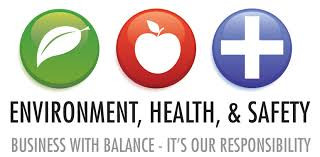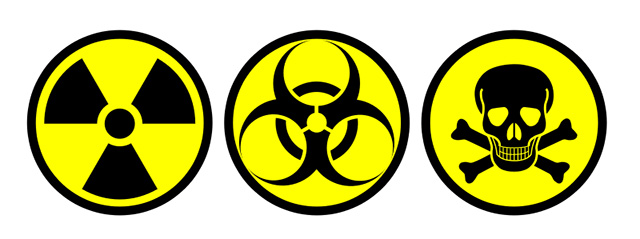Tuesday, November 28, 2017
Semester 3 week 12
While putting together my rough draft I have also been setting up the 30 sample cups for the next step in my experiment. The sample cups currently sit with 20 grams of sediment and .5 a gram of their respective plastic submerged in enough DI water to allow for the sediment and plastic to mix. I have also begun familiarizing myself with the funnel process which puzzles me. I will ask Jasmine because she has completed this step in her experiment to explain to me how it works and how to properly perform the task. I look forward to understanding this step because after working on it for a couple hours, I felt the results from practicing were full of systematic errors.
Semester 3 Week 11
Yesterday I started my research preparation, I am looking at having a total of 30 sample cups with sets of 5 cups containing the same plastics to collect data that will yield an average. Although this process took several hours I wanted to make sure I was properly filling each specimen cup with the appropriate amount of sediment(20g) and of the appropriate plastic(.500g). Next week I will submerge the sample mixtures in DI water and begin the filtration process. The filtration step is not very clear so it will take practice in order for me to understand how it works.
Semester 3 Week 10
This week in the lab was cut short due to a model united nations meeting held at the state capitol which I was required to be a part of. I looked forward to beginning the process outlined by the protocol Jasmine gave me, but it looks like that will have to wait until I come back next week. I am sure some of the protocol ingredients required will already be prepared from jasmine's research. After reading through the protocol several times and having a better understanding about the project I feel prepared to begin my research. I still have questions about certain procedures in the protocol but those will be answered when I get to that part of my research.
Thursday, October 26, 2017
Semester 3 Week 9
Plastic number 1 grinding is quite the slow endeavor and time consuming compared to all other plastics I have ground so far. This week is full of grinding that plastic with the goal of having enough by the end of this week to move into the research phase. I was told this week by Matt I will be recreating Jasmine's research and I am welcome to watch as they perform a task Friday to allow for me to better understand what I will be doing for my research project. I am excited to get more information as to what I will be doing and understanding the importance of this research. This next week may be slow as I familiarize myself with the protocol and understanding the purpose of each step of the protocol.

Semester 3 Week 8
I was able to get into the lab early this week after a class got cancelled, effectively using this time I set up the plastic I will be grinding later this week and have noticed if I use the vice to compress the plastic together at certain points it makes the plastic more rigid and less likely to flex under the stress of the reciprocating saw. I have yet to work on a different container so how I will compress that container to give to same effect will be a bridge I need to cross after grinding this container as much as I can. I believe this is the last plastic type I need to grind before I move into my research phase, Matt will be informing me of my project in better detail next week as we approach the final weeks of plastic grinding. I am looking forward to beginning the next chapter of this semester and getting to put some data together.

Semester 3 week 7
This week has been quite slow. Grinding has resumed but plastic number 1 is scarce or I am not looking in the right places. I have begun grinding the bottle of glue I was given by Amber and have realized the plastic is quite thin and either heats to a melting point rather easily or shakes too much due to the reciprocating motion of the power tool. I am looking into a solution to keep the container from flexing with the motion of the reciprocating saw. I currently have a couple plastic containers of the appropriate plastic type which will allow for me to continue grinding as I search for a better source. I might need to adjust the speed of the saw to a slower rate to allow for the heat build up to be less or else I will be melting the plastic and altering the size of the ground samples. I am under the impression that due to the rate of the reciprocating saw it may take quite some time to attain the proper sample we require to conduct our research.

Wednesday, October 25, 2017
Semester 3 week 6
My grinding of plastics has ground to a stop. Another group of students also need to grind plastics for their projects so as we share the equipment we are on standby until they have completed their part. This allows for us to minimize the risk of cross contamination between plastics. Allowing for proper cleaning between each plastic type and for each person to get time to grind for their project. Once they have completed grinding their PVC I will resume grinding my plastic type 5 and collect that sample. Predicted date for my grinding to resume is somewhere in the next week or so, I will begin grinding plastic number 5 and then take a look at our collection of samples to determine what we need or if I may proceed with my research. The sample size collected of plastic type 5 was roughly 56 grams. I am currently looking into a reliable source of plastic type number 1. 

Friday, October 13, 2017
Semester 3 week 4
Grinding is not as bad as it seems, the process for grinding has proven to be problematic. The first week with the new grinder methods were being tested and we have selected the best way to grind. Now we must look at cross-contamination and the clean up process. Sweeping our immediate area allows for us to start with a clean slate free of other debris. As we grind the friction between the file and the plastics causes for the plastic sample to become statically charged, this charge causes the sample to want to stick to any surface it comes near, clothes, the floor the vice holding the plastic and the clean up equipment. This week I created my first sample with the grinder in 30 minutes, the process is as follows:
1) Sweep the floor to clear debris from other uses of the lab.
2) Grind the plastic until sample size looks to be enough.
3) Vacuum the sample off the floor and move into beaker labeled for that sample.
4) Sweep the remaining plastic to be disposed of due to cross contamination in the broom.
These steps are our way of limiting cross contamination. being careful to collect enough of a sample before moving on as to not need to continuously change between the sample being ground.
My collection sample for the 30 minutes of grinding in week 4 are 31.94 grams, compared to several hours of grinding by hand to attain only a sample of 1.08 grams.
1) Sweep the floor to clear debris from other uses of the lab.
2) Grind the plastic until sample size looks to be enough.
3) Vacuum the sample off the floor and move into beaker labeled for that sample.
4) Sweep the remaining plastic to be disposed of due to cross contamination in the broom.
These steps are our way of limiting cross contamination. being careful to collect enough of a sample before moving on as to not need to continuously change between the sample being ground.
My collection sample for the 30 minutes of grinding in week 4 are 31.94 grams, compared to several hours of grinding by hand to attain only a sample of 1.08 grams.
| Sample 1(Left side) took several hours to attain through the process of grinding with hand tools Sample 2(Right side) took 30 minutes to attain through the process of grinding with power tools |
Semester 3 Week 3
Week 3 has begun and the task of grinding has become much easier. We have a reciprocating saw with an attachment that allows for us to file and grind the plastic. This was a new experience for all of us although I have used power tools before, plastic has proven itself to be a stubborn material. It took me half an hour to find the right speed, and direction to grind the plastic to be effective and collect the samples. Grinding too slow and the plastic wouldn't budge, grinding too fast and the heat from the friction caused the plastic to reform rather than shred. Yet in the end I found a effective way to grind away my day.

Semester 3 week 2
This is my second week back in the stem lab, today will be my first attempt to grind plastics using the manual (by hand) files and cheese shredder like file. Hopefully I find a way to stabilize the softer plastics to prevent them from continuously bending to the motion of the equipment I am going to be using.
The second part of this blog will be after I have attempted to grind the plastic:
I collected the material and equipment and began to grind. The process is simple enough, the only problem so far is that I need to find a way to collect the grounded up plastic and maintain the plastic from moving as much as it does to allow me to efficiently grind it. Samples from today's grinding were insufficient to store for use. The samples mass was approximately 1.084 grams.


The second part of this blog will be after I have attempted to grind the plastic:
I collected the material and equipment and began to grind. The process is simple enough, the only problem so far is that I need to find a way to collect the grounded up plastic and maintain the plastic from moving as much as it does to allow me to efficiently grind it. Samples from today's grinding were insufficient to store for use. The samples mass was approximately 1.084 grams.
Semester 3 week 1
This
week I have begun in the lab with understanding the WAESO project. As I
familiarize myself with my new project, I see the need for a more efficient
plastic grinding method. Eventually I will be using the plastic to perform an
experiment with an attempt to identify bacteria that grows on plastic in water,
after leaving the plastic in water for some time. This semester I will be
working next to several other students who have worked on WAESO previously. I
look forward to hearing from them about what is the most efficient way to grind
the plastics.

Semester 3 week 5
After collecting enough of a type 2 plastic I moved onto collecting sample of plastic type 5. This plastic bottle proved to be harder to grind and due to the color not contrasting with the color of the floor, I could not tell whether the ground material would be enough of a sample. I showed others my method of grinding, for their use on their projects and collected my sample. I did not collect enough of a sample from type 5 plastic which requires more work to be done then type 2 plastic and more adjustments for speed. The sample collected totals 11.74 grams
Monday, May 1, 2017
Semester 2 post 9
After having worked in an office doing research for a couple weeks, Kathleen asked if I would like to head down to the waste room and take care of some other tasks she had available for me to do. I have to say it was pretty cool being down in the waste room getting to see what labs work with and how chemicals are disposed of properly and amount of knowledge it takes to do that job. Knowing what hazards a chemical has and how to properly dispose of is no piece of cake. especially when kits are received and the contents of the kits must be separated and disposed of separately. I never really thought about that side of the labs but its a great experience.

Semester 2 post 8
After weeks of reading scientific journals, and research I am glad to say I am eager to present this Thursday. My presentation took some fine tuning but The finished product really has caught my attention. This was my first literature review and it took sometime to get everything organized, I feel the data was the easy part to interpret, the difficult part was finding articles that had data that would correlate with the target of my project. I read over 15 articles, examined the data and in the end had to decide which articles correlated best with the intended goal so I could fine tune the presentation and final research paper to have a conclusion drawn and explanation for the data put together.

Semester 2 post 7
Over all this past semester has really past by extremely fast, time has flown between 2 internships and full time school. As this semester draws to a close and finals approach I wish everyone best of luck on finals. My project with TGEN has really shown me a new way to think of lab environments and how safety features in labs are set for reasons beyond what we know. This aerosol project has shed light on places where improvements can be made. Kathleen was a great mentor to work with this semester and has intrigued an interest in me for Environmental Health and Safety and how it is important to fully understand the "Why?" protocols are set in place.
Thursday, April 20, 2017
Semester 2 week 10
These last couple weeks have gone by extremely fast, but they have been full of new experiences and great learning opportunities. My reading of articles and scholarly journals have lead me to a conclusion on further improving the already important and meticulous process known as the risk assessment process used in labs to protect lab workers from dangers they may not be fully aware of before beginning new work. I haven't been very clear lately and I should have been when talking about my research, I am researching bio-aerosols to further improve risk assessments that could include lab acquired infections (LAVs) due to bio-aerosols.

Thursday, March 23, 2017
Week 6 Semester 2
Bio-aerosols have been
studied throughout various laboratories to conduct risk assessments. Currently
bio-aerosols are known to be infectious when the samples of material carry an
infection. The method of delivering these infections to lab workers vary by the
lab procedure being performed. Although I am focusing primarily on the lab
process of centrifugation, I am also considering any other lab procedures that
form aerosols and disperse them into the surrounding environment. Currently it
has been shown that aerosol tight rotors should be used anywhere from BSL-2 and
higher. This brings the importance of my research, BSL-1 and the distinguishing
difference between requiring a Biosafety cabinet for the safety of lab workers.
Sources for aerosol generation and
studies of aerosols in labs were not difficult to find, due to the fact that
lab acquired infections go undiagnosed and are not considered laboratory
acquired infections.
Thursday, March 9, 2017
Week 4 Semester 2
This last week seemed as if it was going to last an eternity, luckily its almost over. As spring break is only a couple days away I have taken my time in substantially further my research in bio-aerosols. So far I am about 8 articles in, with another 3 lined up. As I continue this research I begin to not only understand but also appreciate the emphasis of safety throughout the labs I've worked in. Every article I have read shows data that supports the risks of lab workers through aerosols. I will now shift from finding articles that support the generation of aerosols to articles that detail the effects of aerosols.
Thursday, March 2, 2017
Week 3 Semester 2
Continuing Research this week has been fun, I completely enjoy what I do and the experience that i am receiving. Kathleen has shown me around the labs in past weeks and has even guided me through stock checks of flammables cabinets. Soon i will be able to accomplish stock checks at my own pace which will coincide with the research of bio-aerosols, and other tasks given to me. TGEN has given me an experience that really gives me a behind the scenes look at how labs should be organized for
every aspect even waste which is important.

every aspect even waste which is important.
Thursday, February 23, 2017
Week 2 Semester 2
This week has been pretty slow, my research at TGEN was limited to one day due to Monday's holiday. This week at TGEN I was given the task of sorting through several kit for disposal. The kits may contain chemicals which are considered hazardous so it is my job to sort through each kit and locate what chemical hazard are contained and how they are to be properly disposed of. This task proves to become difficult when kits come from companies which have been taken under new ownership and those kits are renamed and given a new product number. These kinds of tasks will coincide with my research upon the aerosol project allowing for me to not only do research to assist TGEN's labs but also assist the environmental health and safety department in keeping on track with proper protocols.
Thursday, February 16, 2017
Week 1 Semester 2
This week has concluded my 4th week since the beginning of my internship at TGEN. Kathleen is a great mentor and she is in charge of the environmental health and safety aspect of TGEN's operations. An overview of my next semester will be research based on bio-aerosols and how they transmit viruses and diseases. I will also be in charge of keeping up to date safety data sheets based on the chemicals being used in the TGEN labs. I have done 1 inventory check and it is cool to get to see all the chemicals the labs use for all the different simultaneous projects being run.

Subscribe to:
Posts (Atom)
